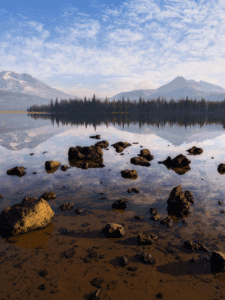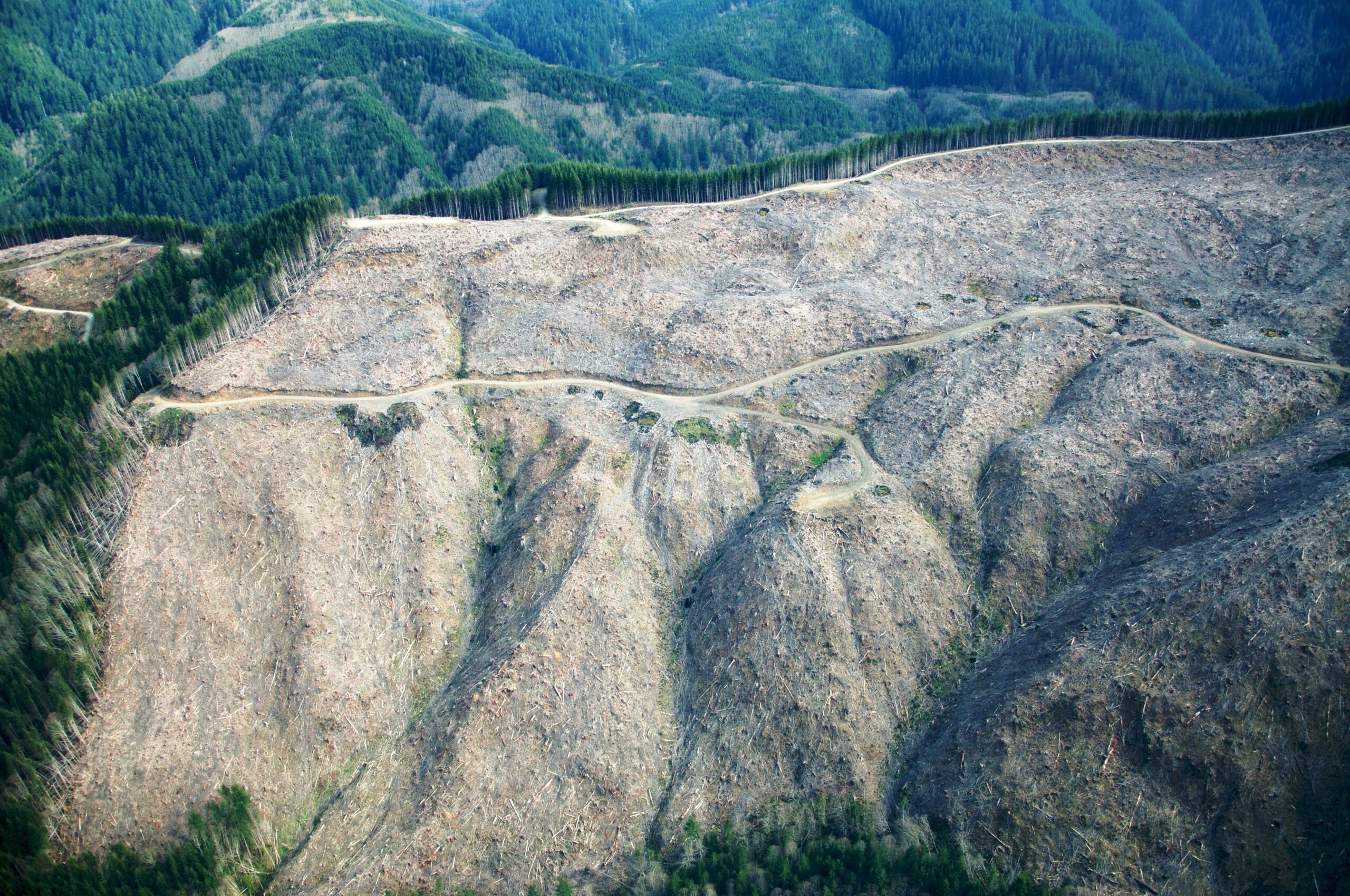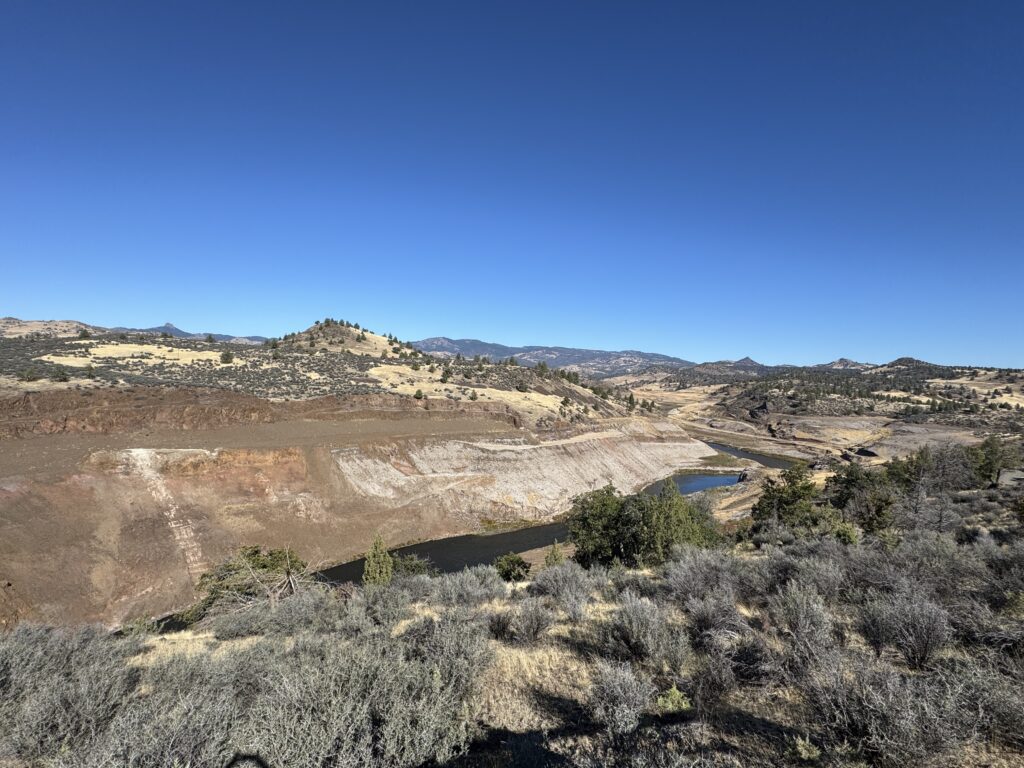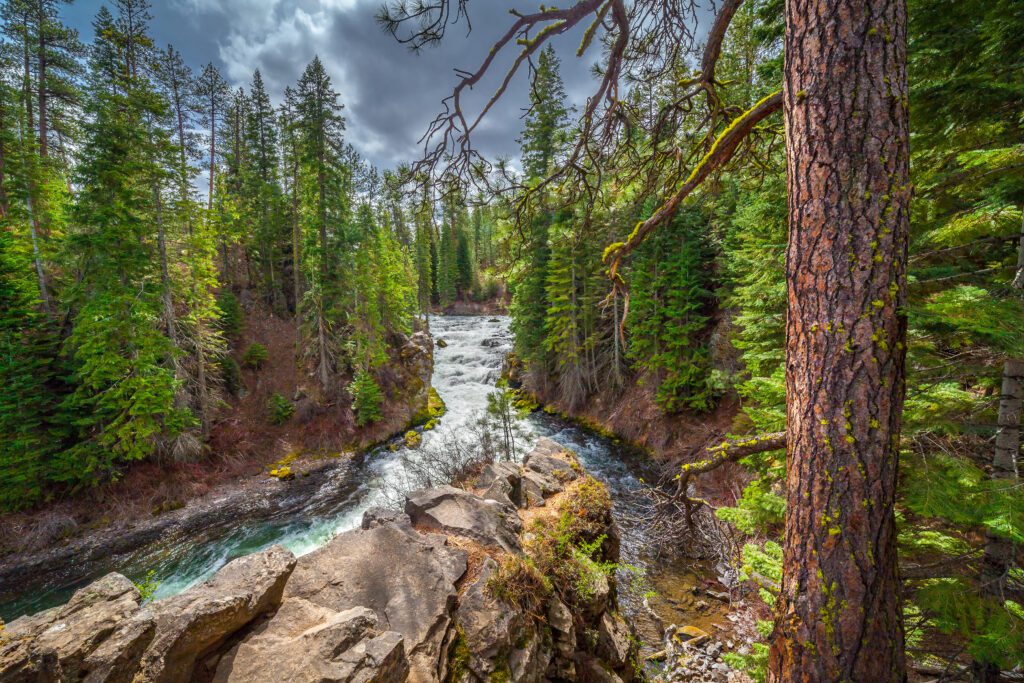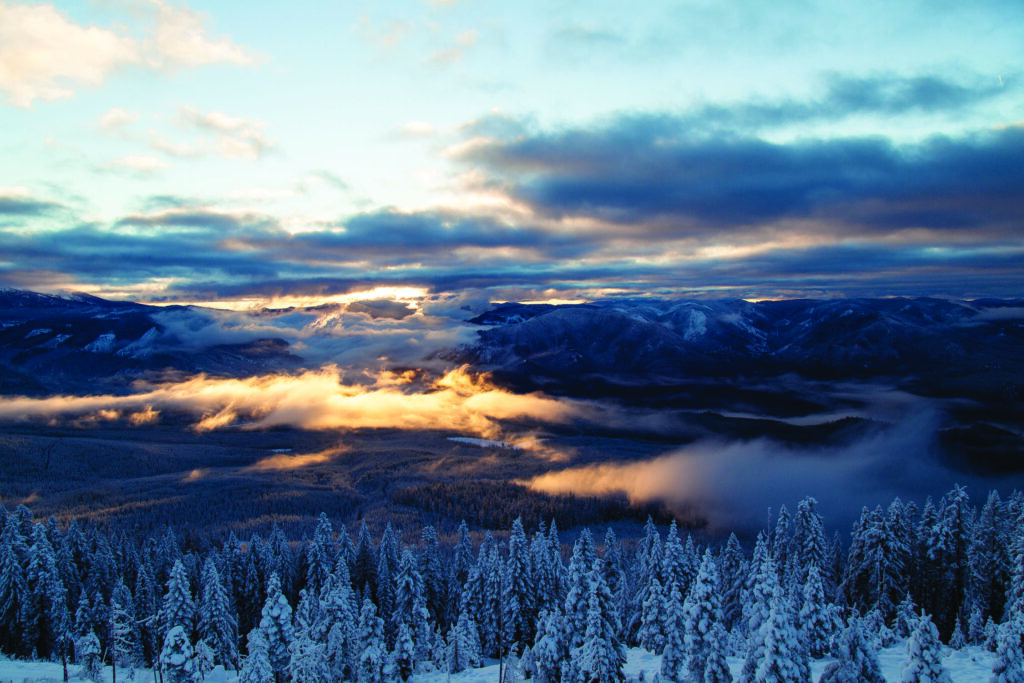A 22-square-mile clearcut.
That’s what I saw when I looked out the window of the small plane I was riding in, a Lighthawk-sponsored flight over the private logging lands bordering the Willamette National Forest. I didn’t know the exact size at the time; all I could do was react to the scale of logging. In my two decades doing conservation work in Oregon, I’d never seen such a large landscape denuded of trees.

Little did I know, this was not even the largest clearcut in Oregon. But more on that later.
After sharing my photos from the flight, Oregon Wild’s resident GIS and mapping expert Erik Fernandez found the clearcut on mapping and satellite tools and outlined its full size: 14,300 contiguous acres, 8 miles across at its largest point, right above the McKenzie River.
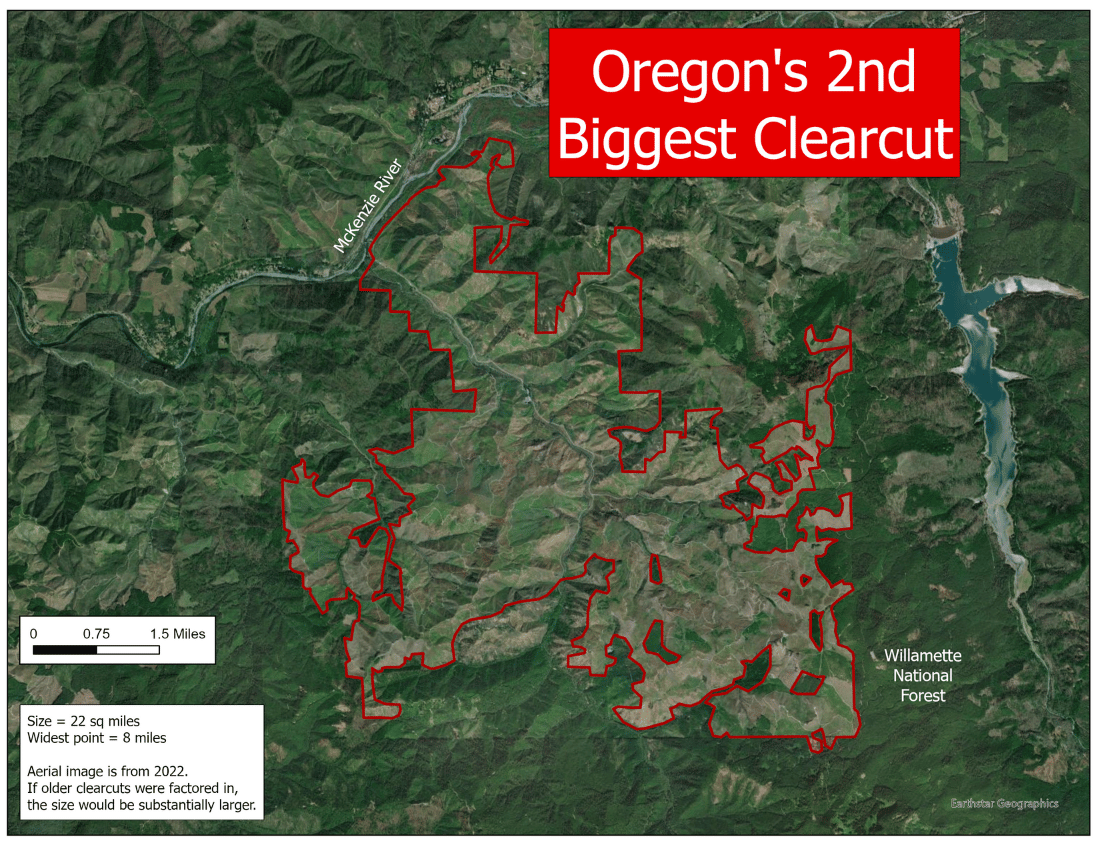
The clearcut is owned, almost entirely, by Campbell Global, a timberland investing group acquired by JP Morgan in 2021. Ironically, the acquisition was touted in their press release as a green investment – that the forestlands would be managed with an eye toward carbon sequestration, biodiversity, and sustainable forestry.
That 22 square mile clearcut, mostly hidden in the hills where most people would never see it, tells quite a different story than the one JP Morgan told on the sustainability pages of their website. 85% of the carbon stored by trees is lost when they are logged and processed, not to mention the damage to soil, plant species, wildlife habitat, drinking water, and more. This clearcut will be replanted as a tree farm, sprayed with pesticides, and logged again in just a few short decades, never allowed to become a true forest again.
Now for the big news: When searching for the clearcut I’d seen from the air, the one we thought was the largest in Oregon, Erik found another, even larger one.
At a staggering 42 square miles, this clearcut is nestled into the hills around the North Umpqua River.
It is roughly the same size as the City of Eugene. Unlike JP Morgan’s clearcut, this one has a variety of owners, including Roseburg Forest Products, Mount Scott Holdings, and Weyerhaeuser.
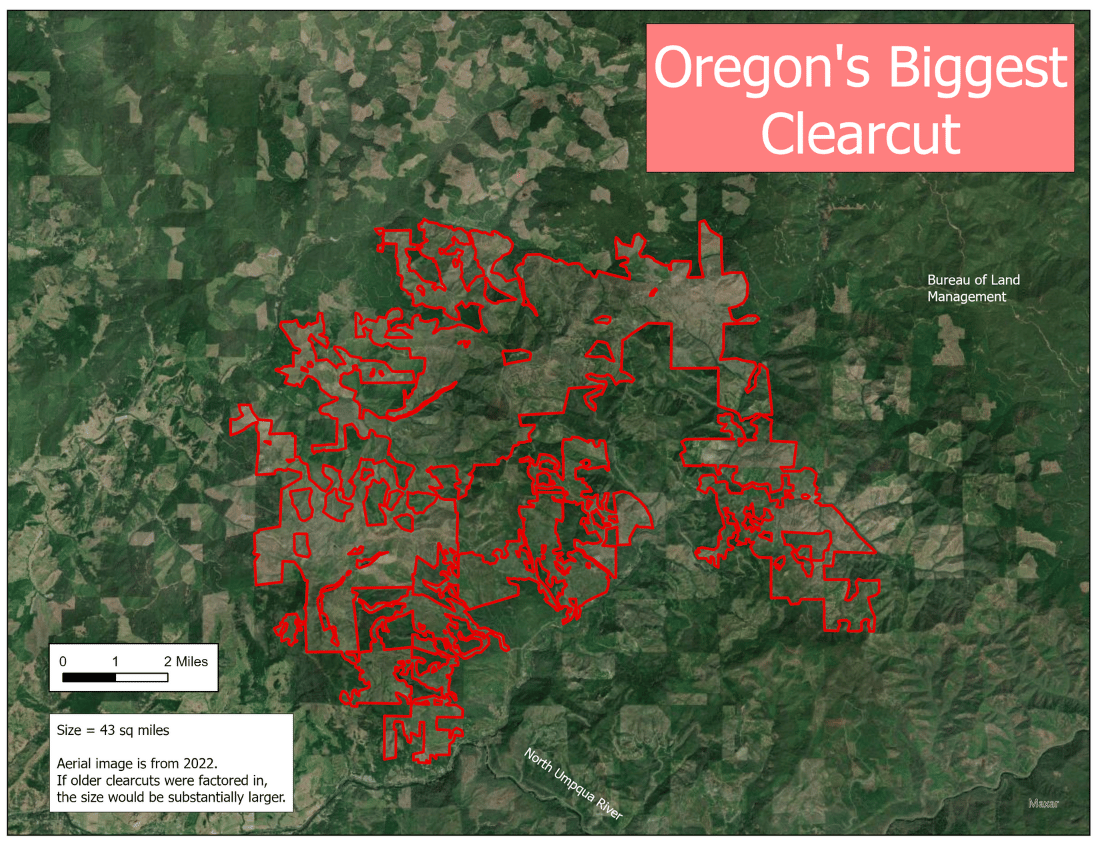
So, why are these clearcuts allowed to be so big?
While Oregon’s Forest Practices Act limits clearcuts to 120 acres, and now offers some protections for streams and headwaters, most of those rules get thrown out the window when there is a disturbance – in this case, the 2020 wildfires. While you can clearly see that vast tracts of forest survived those fires, logging companies (and Wall Street investment firms) used the aftermath of the 2020 wildfires to clearcut with abandon, stringing together cuts with areas that had been logged before the fires to create massive areas denuded of trees.
@oregonwildconservation Oregon’s largest clearcut is the same size as its 3rd largest city, Eugene. We were able to map these clear cuts thanks to our GIS Expert, Erik. These two cuts lie just out of the public’s view about the hillside near the McKenzie River and The North Umpqua River. Our goal is to bring attention to these and other clear cuts so that the public knows what may be affecting their environment and water. For updates on Oregon’s forest and water policies, sign up for alerts. Link in our bio! #logging #clearcut #oregon #pnw #gis #mapping #conservation #forests #climateaction #pnwlife #optoutside #environment ♬ Autumn Leaves – Timothy Cole
These clearcuts also illustrated a stark difference I saw from my Lighthawk flight: public vs private industrial lands. While the private tree farms had been liquidated, living and dead trees still stood across the Willamette National Forest. In these areas, there is thriving habitat for certain plants and animals that rely on post-fire landscapes to survive. And the unlogged areas will also grow back into a healthier and more diverse forest than the re-planted monoculture on adjoining private lands. The soil will be stabilized by the roots of living trees, snags, and the lush undergrowth that returns to an open-canopy forest. Lastly, carbon stored in both the living and dead trees on our public lands will stay on the landscape for decades, helping us fight climate change.
While I was horrified by the extent of greed I saw from my flight, and saddened by some of the special places that the 2020 fires had changed, I was also thankful for our public lands where the forest – in all its natural and wonderful diversity – remains.
